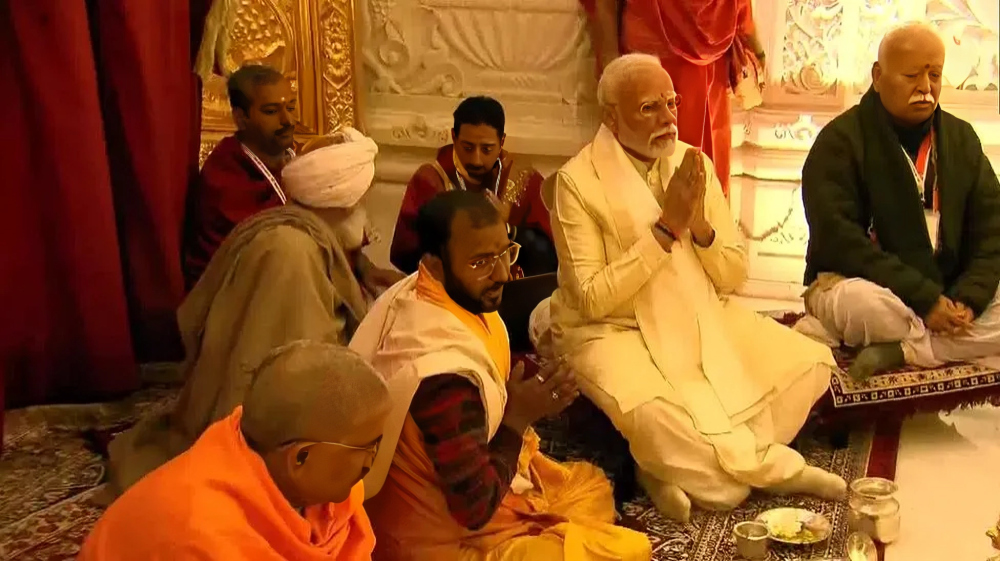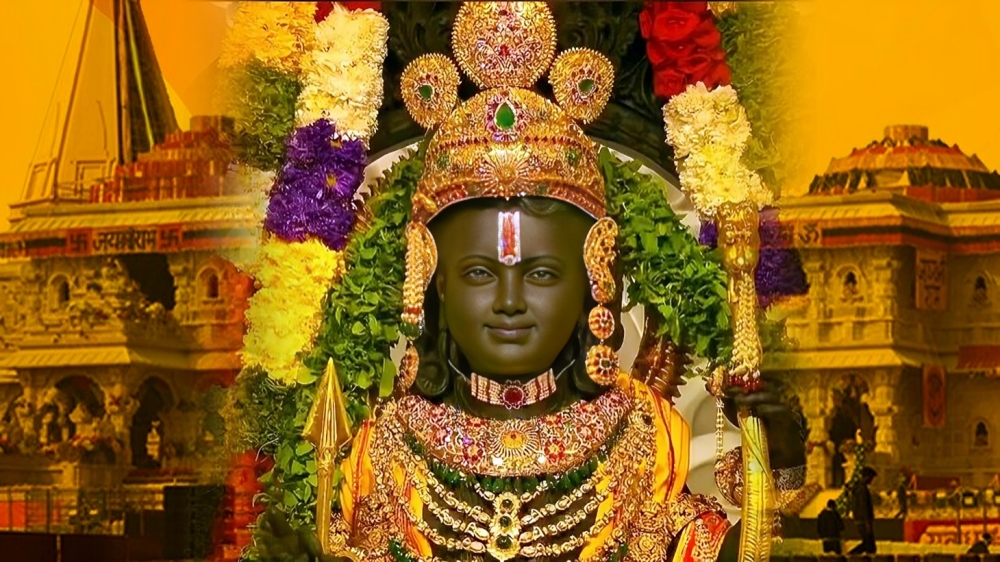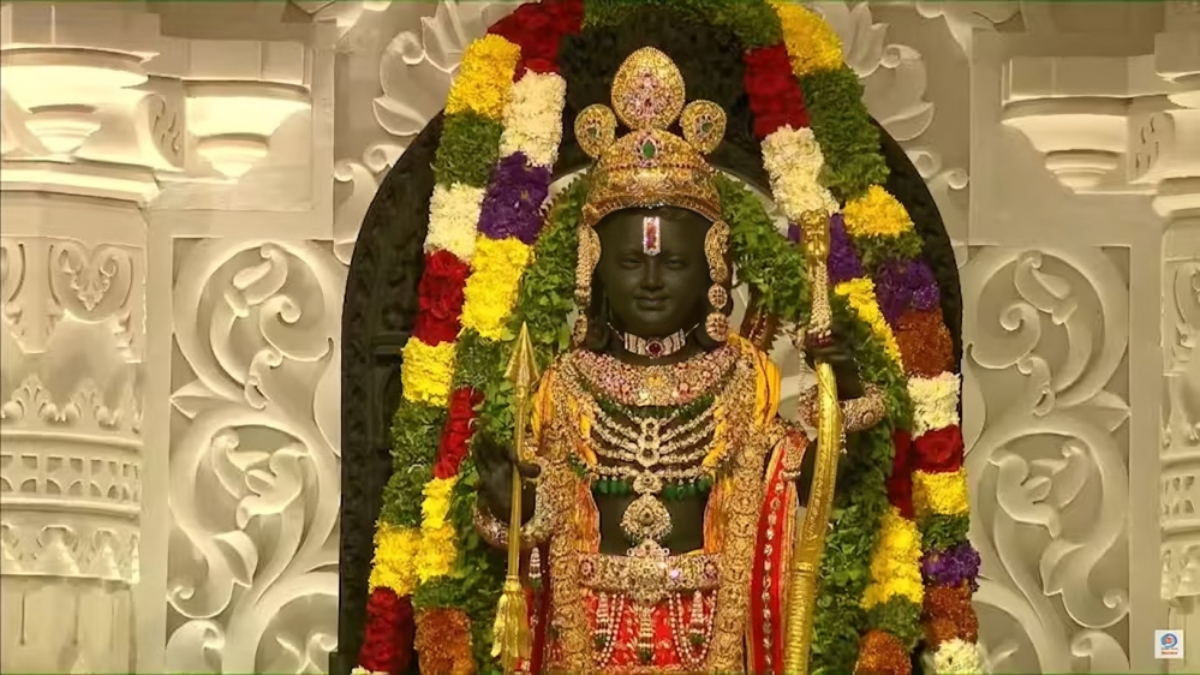India’s Prime Minister, Narendra Modi, has officially opened a magnificent temple dedicated to the Hindu deity Ram in the city of Ayodhya. This momentous occasion is seen as the beginning of a new era for India. The temple stands in place of a 16th-century mosque that was demolished by Hindu mobs in 1992, leading to widespread violence and the loss of nearly 2,000 lives.
The inauguration ceremony was attended by prominent figures from the film and cricket industries, adding to the grandeur of the event. However, some Hindu religious leaders and a majority of the opposition chose to boycott the ceremony, alleging that Mr. Modi was exploiting it for political purposes.
With general elections approaching in the coming months, Mr. Modi’s political rivals claim that his party, the Bharatiya Janata Party (BJP), will attempt to garner votes by associating themselves with the temple, considering that 80% of the country’s population is Hindu.
Critics have also raised concerns about the government’s involvement in a religious celebration, as India’s constitution declares the country to be secular. The event has stirred fear and painful memories among the Muslim community, who make up India’s largest minority, as expressed by members of the community in Ayodhya in interviews with the BBC leading up to the ceremony..
In a momentous occasion witnessed by millions through live television coverage, Mr Modi was seen engaging in religious rituals within the sacred confines of the temple. Accompanied by priests and Mohan Bhagwat, the leader of the Rashtriya Swayamsevak Sangh (RSS) – the ideological source of Hindu nationalist parties – the event was a significant display of devotion.
Expressing his profound sentiments, Mr Modi declared, “Today will forever be etched in the annals of history. After enduring years of struggle and countless sacrifices, Lord Ram has finally returned [home]. On this momentous occasion, I extend my heartfelt congratulations to every citizen of our nation.”
The temple’s construction, funded entirely through private donations amounting to $217m (£170m), has reached completion for its ground floor, while the remaining floors are anticipated to be finished by year-end. This ambitious project is part of a comprehensive city revitalization endeavor, projected to exceed $3bn in expenses.

The construction of the Ram temple in Ayodhya marks the fulfillment of a long-standing Hindu nationalist commitment that has spanned several decades. According to many Hindus, the Babri mosque was constructed by Muslim invaders on the remains of a temple that holds significant religious importance as the birthplace of the Hindu deity.
The movement advocating for the construction of the temple played a crucial role in propelling the BJP into a position of political prominence during the 1990s.
The atmosphere surrounding the temple’s inauguration was filled with joy and celebration, as tens of thousands of chanting Hindu devotees waved flags and played drums. Military helicopters added to the festive ambiance by showering flower petals on the temple. Streets adorned with marigolds displayed saffron flags featuring images of Lord Ram, alongside banners showcasing the faces of Prime Minister Modi and Uttar Pradesh Chief Minister Yogi Adityanath.
The event attracted the presence of some of India’s most prominent celebrities, including Bollywood star Amitabh Bachchan and cricketer Sachin Tendulkar.
In numerous other cities in the northern region, Hindus have illuminated lamps and raised saffron flags adorned with images of Ram on their rooftops, including various neighborhoods in Delhi. The ceremony, known as Pran Pratishtha, which translates to “establishment of life force” in Sanskrit, lasted approximately one hour. According to Hindu beliefs, the recitation of mantras and the performance of rituals around a fire will imbue sacred life into an idol or a photograph of a deity.
Along the banks of the Saryu River, a tributary of the Ganges, several domestic television stations constructed grand sets just behind the temple, providing extensive coverage of the event. Some even declared the moment of consecration as the commencement of “Ram Rajya” (Lord Ram’s rule) in India.

In 2019, Hindus were granted the disputed land by the Supreme Court following a lengthy legal battle that ensued after the demolition of the mosque. Although Muslims were allocated a plot outside the city for a mosque, they have yet to construct one.
During an interview with the BBC, a member of the community in Ayodhya expressed agreement with the Supreme Court’s decision to allow Hindus to build the temple on the site. He acknowledged that they did not accept the decision happily but felt powerless to change it. Another individual mentioned being pleased with the construction of the temple by Hindus, but also expressed sadness due to the destruction of the mosque.
The newly constructed temple spans three stories and is constructed using pink sandstone and black granite. It occupies 7.2 acres within a 70-acre complex. Last week, a specially commissioned 51-inch (4.25-ft) statue of the deity was unveiled and placed on a marble pedestal in the sanctum sanctorum.

Despite Mr. Modi’s appeal to pilgrims to stay home and watch the ceremony on television, thousands of police were deployed for Monday’s event. In states ruled by the BJP, a full or half-day holiday was declared, resulting in the closure of schools, colleges, and stock markets.
However, the celebration was marred by dissenting voices from some top religious seers who argued that performing rituals at an incomplete temple went against Hinduism. Additionally, many opposition leaders chose to stay away from the event.
In response, some opposition-ruled states announced their own plans for the day. West Bengal Chief Minister Mamata Banerjee stated that she would offer prayers at the renowned Kali temple in Kolkata and lead an all-faith rally. The state of Odisha (Orissa) also revealed extensive arrangements to bring pilgrims to the sacred Jagannath temple in Puri, a significant pilgrimage site for Hindus.
Authorities anticipate a daily influx of over 150,000 visitors once the Ayodhya temple is fully prepared. To accommodate this expected surge, new hotels are being constructed and existing ones are being renovated as part of a major transformation. In recent weeks, a new airport and railway station have also been inaugurated.
Officials assert that they are developing a “world-class city” to attract pilgrims and tourists. However, many local residents have expressed concerns to the BBC, stating that their homes, shops, and religious structures have been either completely or partially demolished to make way for road expansions and other facilities.

